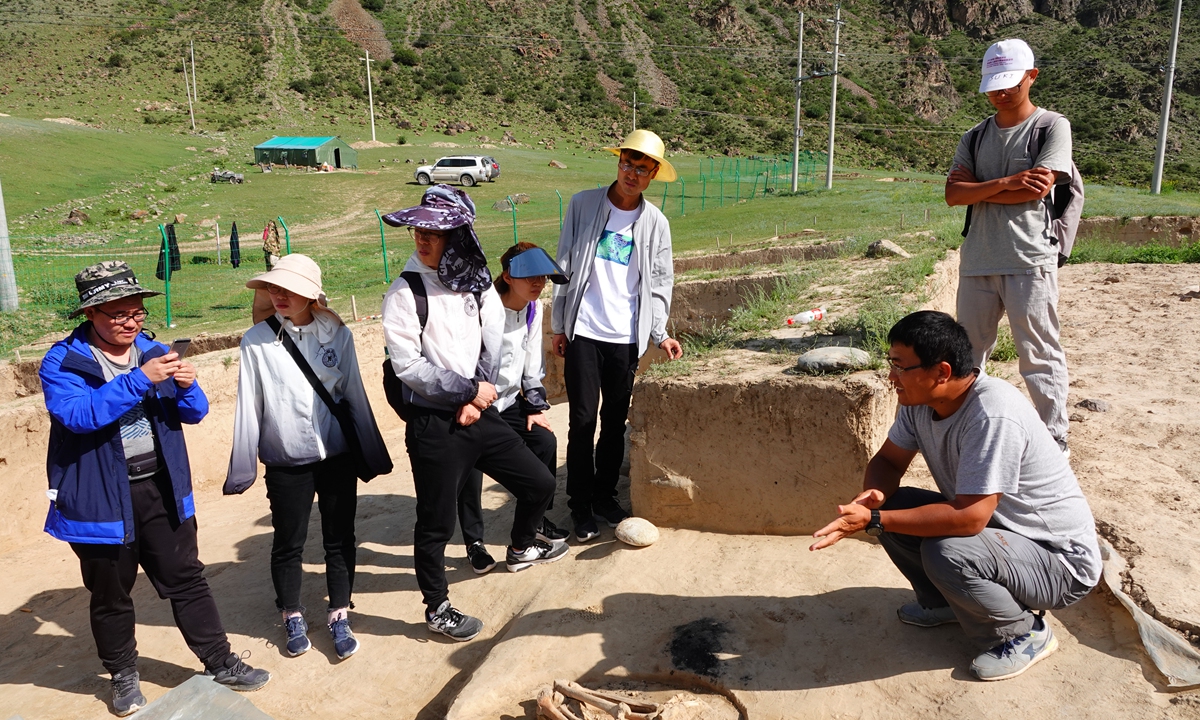
Photo: Courtesy of Qiu Menghan
A new study by Chinese scholars has unveiled evidence of the earliest systematic use of coal for fuel, dating back 3,600 years, advancing the history of early coal usage by approximately a millennium.
Titled
Earliest Systematic Coal Exploitation for Fuel Extended to ~3600 B.P., the paper was published in the prominent journal Science Advances. The research was completed through the collaboration of researchers from multiple institutes, such as Lanzhou University, Renmin University of China, and the Institute of Cultural Relics and Archaeology of the Xinjiang Uygur Autonomous Region.
"The research has expanded our knowledge of human energy history while also offering a fresh case study for understanding the human-environment relationship in prehistoric times," Qiu Menghan, one of the authors of the paper and a doctoral student at Lanzhou University, told the Global Times on Monday.
Some prehistoric archaeological sites have shown sporadic combustion of coal for fuel, however, concrete evidence of prehistoric coal usage before 2,500 years ago had remained absent until the archaeological excavations at the Jirentaigoukou (JRTGK) site, a significant Bronze Age settlement, in Nilka County, the Ili Kazak Autonomous Prefecture in Xinjiang.
"Unlike burials, settlement sites offer a more comprehensive and intricate understanding of the inhabitants' way of life," Qiu said.
After systematic excavations at the JRTGK and its associated tombs were initiated in 2015, researchers uncovered indications of coal use along with evidence of copper production activities.
Piles of coal were discovered at the site, often found surrounding residential structures, indicating intentional placement for easy access. Grey coal ash and partially burned coal were also found on the ground, and coal residue was present in fire pits within certain stoves and dwellings.
Additionally, the coal carbon content within the site was relatively higher and more common than some surrounding coal deposits, suggesting an understanding of coal variations across different locations.
In subsequent excavations, the archaeological team also uncovered wooden carts at the site, potentially shedding light on the transportation of coal in ancient times.
"These archaeological phenomena present a comprehensive evidence chain regarding coal fuel development, signifying that people had systematically developed and utilized coal fuel," Qiu noted.
Analyses of natural soil samples surrounding the site and samples from different periods of the site indicated that heavy metal elements were significantly enriched in the late-stage layers, further confirming the site's role as a regional metallurgical center, which needed substantial energy sources during that time.
Researchers explained that the Ili region of China might have been influenced by a global climate deterioration event around 4,200 years ago, leading to a decline in human activities between 4,200 and 3,800 years ago.
The team speculated that the late-stage site experienced deteriorating vegetation, particularly a contraction in coniferous forests, due to a relatively colder climate. The intensified demand for fuel due to larger settlements and higher-intensity metallurgical activities, coupled with diminishing wood resources, exacerbated societal-environmental conflicts, ultimately driving local communities to transition their energy sources.
The study about the JRTGK site has not ended. According to Qiu, in the future, researchers will explore whether there are concurrent or earlier/later instances of coal fuel usage in the surrounding regions, which is "highly significant" for understanding the patterns of prehistoric societal evolution and for exploring issues related to the spread and inheritance of prehistoric technologies.
Additionally, they also intend to investigate the environmental impact of substantial coal combustion to explore questions related to the Anthropocene epoch, which will be primarily achieved through the study of sediment around the site.
URL: https://www.seeglobalnews.com/read-2169.html